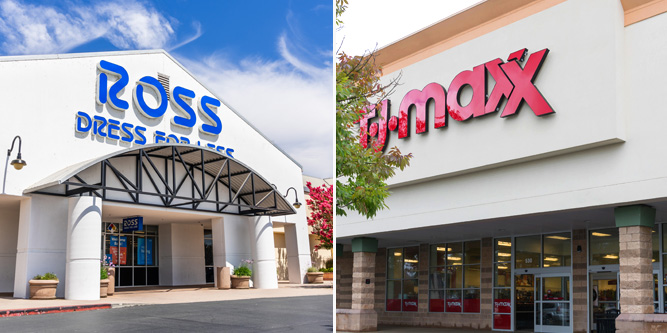
Photos: Getty Images/Andrei Stanescu, helen89
TJX Cos. and Ross Stores are expected to gain market share amid the downturn, but their second-quarter performances reveal they still have to fight through inventory and store traffic challenges tied to COVID-19.
For both, sales significantly outperformed conservative forecasts as stores reopened, but started trending down in the mid-teens in July due to inventory shortages and slower in-store traffic, leading to cautious second-half outlooks.
The weakening sales trend was blamed on:
- Supply chain bottlenecks: Both retailers reopened their distribution centers at the same time or after they reopened their stores and failed to ramp up fast enough to fill understocked store inventories. Vendors and transportation providers likewise initially encountered logistics hurdles. Ross faced a DC staffing shortfall due to heightened competition for warehouse workers.
- Category gaps: Categories such as comfy casual and active apparel as well as home are in high demand amid the stay-at-home economy and currently tough to replenish. The sudden cancellation of orders from retailers and vendors combined with quickly shifting trends led to an imbalance. Product availability is expected to improve in the coming quarters and reach equilibrium by year-end.
- July and August moderation: Initial store opening sales were boosted by pent-up demand and aggressive markdowns, but traffic slowed in July and August due to the depleted inventory levels and a return to more normal demand. A resurgence of COVID-19 cases in California, Florida, Texas and Arizona impacted Ross. TJX also blamed reduced demand for career apparel and some nervousness about in-store shopping. Ernie Herrman, TJX’s CEO, on an analyst call estimated that at least one out of every seven or eight customers “just aren’t comfortable right now going into the brick & mortar.”
Both TJX and Ross expect to benefit from the stocks they packed away to support first-quarter sales, trading down by consumers amid the downturn, and buying and real estate opportunities created by consolidation.
Barbara Rentler, Ross’ CEO, said on an analyst call, “Over the longer term, we remain well positioned as an off-price retailer to continue to gain market share given the large number of retail store closures and consumers’ continued focus on value and convenience.”
- The TJX Companies, Inc. Reports Q2 FY21 Results; Reopened Stores And E-Commerce Sites Around The World; Reports Second Quarter Sales Of $6.7 Billion, Well Above Its Internal Plans; Generates Significant Cash Flow During The Quarter – TJX Cos.
- Ross Stores Reports Second Quarter Results – Ross Stores
- TJX Companies Inc. (TJX) Q2 2021 Earnings Call Transcript – AlphaStreet
- Ross Stores Inc (ROST) Q2 2020 Earnings Call Transcript – The Motley Fool
- Will off-pricers be major share gainers post-coronavirus? – RetailWire


Leave a Reply
You must be logged in to post a comment.